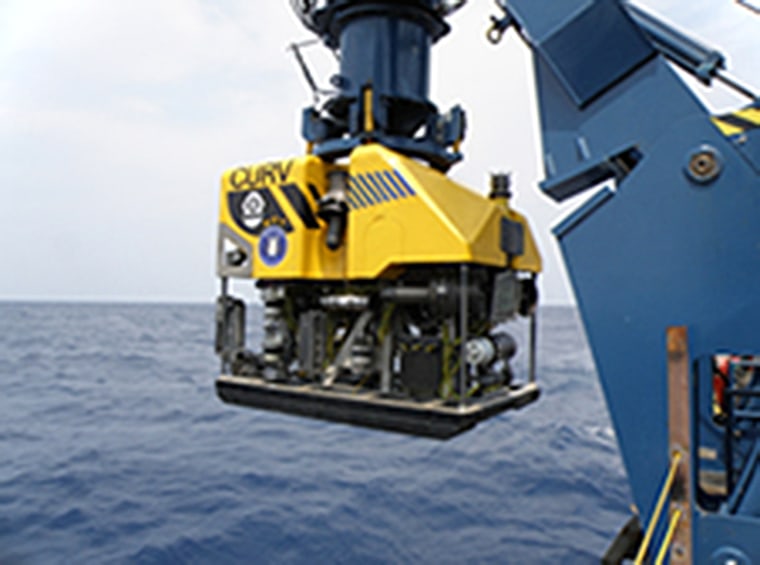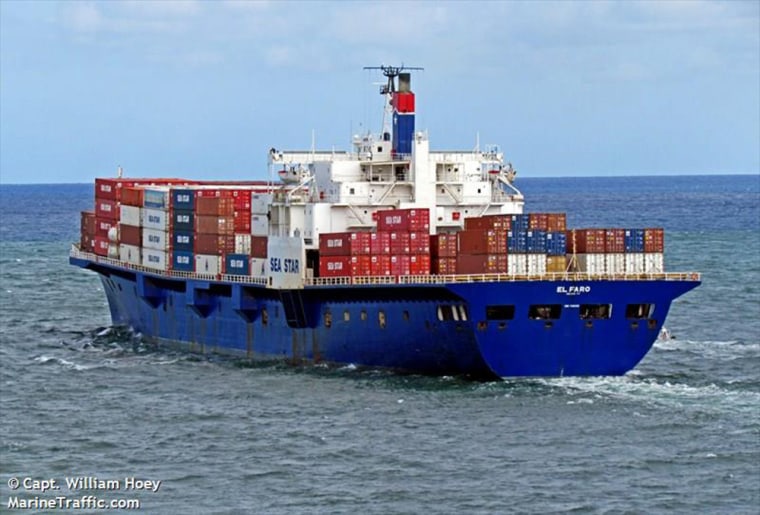WASHINGTON — Searchers have found wreckage in 15,000 feet of water east of the Bahamas, and now a remotely operated deep ocean vehicle will be sent in to see whether it's the cargo ship El Faro that vanished a month ago.
That operation could begin as early as Sunday, the U.S. National Transportation Safety Board said in a statement.
The 790-foot El Faro vanished Oct. 1 with 33 crew members on heaving seas during Hurricane Joaquin.
Authorities said they aim to survey the wreckage and hope to locate a voyage data recorder — the ship's "black box" — that could yield clues as to what happened.

An NTSB statement said a specially equipped Navy vessel found wreckage Saturday afternoon in the area of the ship's last known position. It said the wreckage is "consistent with a 790-foot cargo ship, which from sonar images appears to be in an upright position and in one piece."
Saturday's announcement by the NTSB, which is investigating the disappearance, came after a ship it contracted for the search from the Navy, the USNS Apache, had spent days combing those waters.
Related: Wreckage Believed to Be Sunken Cargo Ship El Faro Found, NTSB Says
"To confirm the finding, specialists on Apache will use CURV 21, a deep ocean remotely operated vehicle to survey and confirm the identity of the wreckage," said the statement by Peter Knudson from the NTSB's public affairs office.
The El Faro's captain had called in before the vessel disappeared saying the ship had lost its engine power during its voyage from Jacksonville, Florida, to San Juan, Puerto Rico. The captain, Michael Davidson, said the ship was listing and taking on water.
The Coast Guard had searched for the ship for days after El Faro disappeared in the storm, finding debris and one body in a survival suit.

The El Faro was scheduled for retirement from Caribbean duty and for new retrofitting for service between the West Coast and Alaska, company officials have said. Both the El Faro and its sister ship were slated to be replaced by two new ships. Aboard when it disappeared were five engineers from Poland, who were working on the retrofitting as the ship sailed to Puerto Rico.
NTSB investigators have said Davidson intended to pass 65 miles from the center of the storm. Independent maritime experts have said that such a decision would be risky.
The statement said the coming phase of operations is expected to take up to 15 days to complete in ideal conditions, longer depending weather or other conditions encountered.
The Navy search ship arrived at the site on Oct. 23 and for three days towed a special device called a towed pinger locator in the water, hoping to pick up sounds of the pinger from El Faro's voyage data recorder.
The NTSB said after three fruitless days, searchers then deployed a special side-scanning sonar system called Orion that detected the wreckage Saturday afternoon.